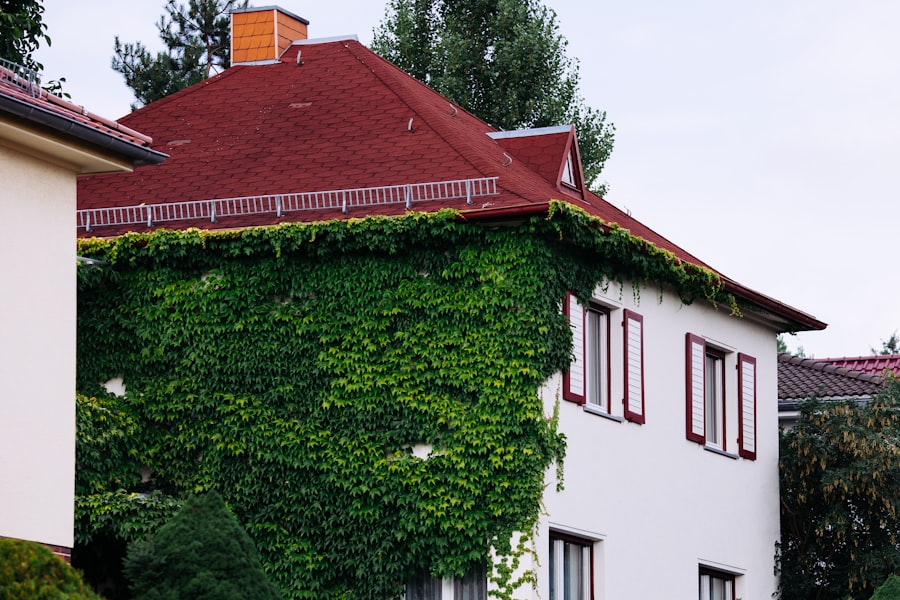Green building certifications have emerged as a pivotal aspect of sustainable architecture and construction, reflecting a growing awareness of environmental issues and the need for responsible resource management. These certifications serve as a benchmark for evaluating the sustainability of buildings, ensuring that they meet specific environmental standards throughout their lifecycle. The concept of green building encompasses a wide range of practices aimed at reducing the negative impacts of construction on the environment while promoting the health and well-being of occupants.
As urbanization accelerates and climate change becomes an increasingly pressing concern, the role of green building certifications has gained prominence in guiding developers, architects, and builders toward more sustainable practices. The certification process typically involves a comprehensive assessment of various factors, including energy efficiency, water conservation, indoor air quality, and the use of sustainable materials. Organizations such as the U.S.
Green Building Council (USGBC) and the International Living Future Institute (ILFI) have established rigorous standards that buildings must meet to achieve certification. These standards not only encourage innovation in design and construction but also foster a culture of accountability within the industry. As more stakeholders recognize the importance of sustainability, green building certifications are becoming essential tools for promoting environmentally responsible development.
Key Takeaways
- Green building certifications are a way to measure and recognize a building’s environmental performance and sustainability.
- There are various types of green building certifications, such as LEED, BREEAM, and Green Globes, each with its own set of criteria and standards.
- Green building certifications can lead to reduced operating costs, increased property value, and improved occupant health and productivity.
- Green building certifications have a positive impact on the environment by reducing energy and water consumption, as well as minimizing waste and carbon emissions.
- While green building certifications can lead to initial higher costs, the long-term economic benefits include lower utility bills and higher property value.
Types of Green Building Certifications
There are several prominent green building certification systems worldwide, each with its unique criteria and focus areas. The Leadership in Energy and Environmental Design (LEED) certification, developed by the USGBC, is one of the most recognized systems globally. LEED evaluates buildings based on various categories, including sustainable site development, water savings, energy efficiency, materials selection, and indoor environmental quality.
Projects can earn points in these categories to achieve different levels of certification: Certified, Silver, Gold, or Platinum. This tiered approach allows for flexibility and encourages continuous improvement in sustainable practices. Another significant certification is the Building Research Establishment Environmental Assessment Method (BREEAM), which originated in the United Kingdom.
BREEAM assesses the environmental performance of buildings across several categories, including energy use, health and well-being, pollution, and innovation. Similar to LEED, BREEAM awards ratings based on points accrued during the assessment process. Additionally, the Living Building Challenge (LBC) sets an even higher bar for sustainability by requiring buildings to meet stringent performance standards over a full year before certification can be granted.
This certification emphasizes regenerative design principles, aiming for buildings that produce more energy than they consume and manage their water needs sustainably.
Benefits of Green Building Certifications

The advantages of obtaining green building certifications extend beyond mere recognition; they encompass a wide array of benefits that can significantly enhance a building’s value and performance. One of the most immediate benefits is improved energy efficiency. Buildings that adhere to green certification standards often incorporate advanced technologies such as energy-efficient HVAC systems, high-performance insulation, and renewable energy sources like solar panels.
These features not only reduce operational costs but also contribute to lower greenhouse gas emissions, aligning with global efforts to combat climate change. Moreover, green building certifications can enhance occupant health and productivity. Research has shown that buildings designed with sustainability in mind often feature improved indoor air quality, natural lighting, and access to green spaces—all factors that contribute to the well-being of occupants.
For instance, studies have indicated that employees working in LEED-certified offices report higher satisfaction levels and increased productivity compared to those in conventional buildings. This correlation between green building practices and occupant health underscores the importance of integrating sustainability into architectural design.
Impact of Green Building Certifications on the Environment
The environmental impact of green building certifications is profound and multifaceted. By promoting sustainable construction practices, these certifications help mitigate the adverse effects of urban development on ecosystems and natural resources. For example, LEED-certified buildings are designed to minimize water usage through efficient plumbing fixtures and rainwater harvesting systems.
This reduction in water consumption not only conserves a vital resource but also lessens the burden on municipal water treatment facilities. Additionally, green building certifications encourage the use of sustainable materials sourced from renewable resources or recycled content. This practice reduces the demand for virgin materials, thereby decreasing deforestation and habitat destruction associated with traditional construction methods.
Furthermore, many certification programs emphasize waste reduction strategies during construction and operation phases, promoting recycling and composting initiatives that divert waste from landfills. The cumulative effect of these practices contributes to a significant reduction in a building’s overall carbon footprint.
Economic Impact of Green Building Certifications
The economic implications of green building certifications are increasingly recognized by developers, investors, and policymakers alike. One of the most compelling arguments for pursuing green certifications is the potential for cost savings over a building’s lifecycle. While initial construction costs may be higher due to investments in sustainable technologies and materials, these expenses are often offset by reduced operational costs associated with energy and water savings.
For instance, a study conducted by the USGBC found that LEED-certified buildings can achieve energy savings of 30% or more compared to non-certified counterparts. Moreover, properties with green certifications tend to have higher market values and attract premium rents. Investors are increasingly seeking out sustainable properties as part of their portfolios due to growing consumer demand for environmentally responsible options.
A report from McGraw Hill Construction indicated that 47% of surveyed builders believed that green buildings would command higher prices in the market. This trend is further supported by research showing that tenants are willing to pay more for spaces that offer sustainability features, leading to increased occupancy rates for certified buildings.
Social Impact of Green Building Certifications

The social implications of green building certifications extend beyond economic benefits; they encompass broader community well-being and social equity considerations. Green buildings often prioritize accessibility and inclusivity in their design, ensuring that spaces are welcoming to all individuals regardless of age or ability. Features such as universal design principles can enhance mobility for people with disabilities while creating environments that foster social interaction among diverse groups.
Furthermore, green building certifications can contribute to community resilience by promoting sustainable urban development practices that enhance local ecosystems and public health. For example, projects that incorporate green roofs or urban gardens not only improve air quality but also provide recreational spaces for residents. These initiatives can strengthen community ties by encouraging outdoor activities and fostering a sense of ownership among residents.
As cities grapple with challenges such as climate change and population growth, green building certifications offer a pathway toward creating healthier, more vibrant communities.
Challenges and Limitations of Green Building Certifications
Despite their numerous benefits, green building certifications face several challenges and limitations that can hinder their widespread adoption. One significant barrier is the perception that achieving certification is prohibitively expensive or complex. Many developers may be deterred by the upfront costs associated with implementing sustainable practices or navigating the certification process itself.
This perception can be particularly pronounced among smaller firms or those operating in regions with limited resources or expertise in green building practices. Additionally, there is often confusion surrounding the various certification systems available, leading to uncertainty about which program best aligns with a project’s goals. The lack of standardization across different certification systems can create challenges for stakeholders attempting to compare their benefits effectively.
Furthermore, while many certifications focus on energy efficiency and resource conservation, they may not adequately address social equity issues or community engagement—factors that are increasingly recognized as essential components of sustainable development.
Future Trends in Green Building Certifications
As the field of sustainable architecture continues to evolve, several trends are emerging within the realm of green building certifications that promise to shape their future landscape.
These advancements can streamline the certification process while providing valuable data for ongoing monitoring and improvement. Another trend is the growing emphasis on holistic approaches to sustainability that encompass not only environmental considerations but also social equity and community engagement. Certification programs are beginning to incorporate metrics related to social impact, such as community involvement in design processes or equitable access to resources.
This shift reflects a broader recognition that true sustainability requires addressing the interconnectedness of environmental health, economic viability, and social well-being. In conclusion, as awareness of climate change and resource scarcity continues to rise, green building certifications will likely play an increasingly vital role in shaping the future of construction and urban development. By fostering innovation and encouraging responsible practices across various sectors, these certifications can help pave the way toward a more sustainable built environment for generations to come.
In the realm of sustainable architecture, understanding the nuances of green building certifications is crucial for both developers and consumers aiming to minimize environmental impact. An interesting perspective on this topic can be found in the article “Unlock Your Creative Potential with the Samsung Galaxy Book Flex2 Alpha.” While the article primarily focuses on the technological advancements of the Samsung Galaxy Book Flex2 Alpha, it also touches upon the importance of integrating eco-friendly practices in technology and design. This connection highlights the broader trend of sustainability across various industries, including both technology and construction, emphasizing the growing importance of green certifications in promoting environmentally responsible practices.
FAQs
What are green building certifications?
Green building certifications are third-party verification systems that assess the environmental performance of a building. They evaluate factors such as energy efficiency, water usage, materials selection, and indoor air quality.
Why are green building certifications important?
Green building certifications are important because they provide a standardized way to measure and communicate the environmental performance of a building. They help to promote sustainable building practices and provide a way for building owners to demonstrate their commitment to environmental responsibility.
What are some popular green building certifications?
Some popular green building certifications include LEED (Leadership in Energy and Environmental Design), BREEAM (Building Research Establishment Environmental Assessment Method), and Green Star. Each certification system has its own set of criteria and requirements for achieving certification.
How do green building certifications impact the environment?
Green building certifications can have a positive impact on the environment by promoting energy efficiency, water conservation, and the use of sustainable materials. By encouraging sustainable building practices, certifications can help reduce the environmental impact of the built environment.
What are the benefits of pursuing green building certifications?
Pursuing green building certifications can lead to a number of benefits, including lower operating costs, improved occupant health and productivity, and a reduced environmental footprint. Additionally, certified buildings may qualify for incentives and rebates from government agencies and utility companies.

